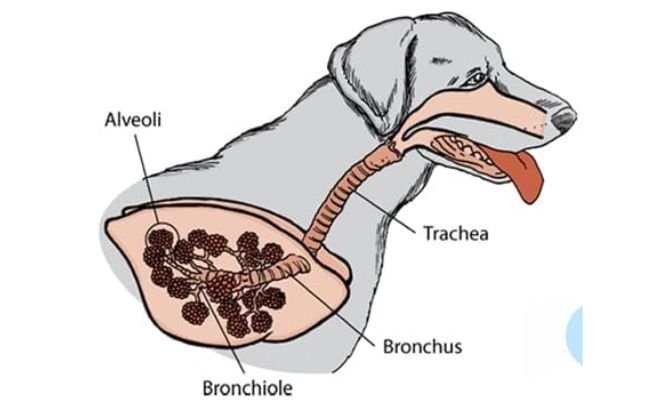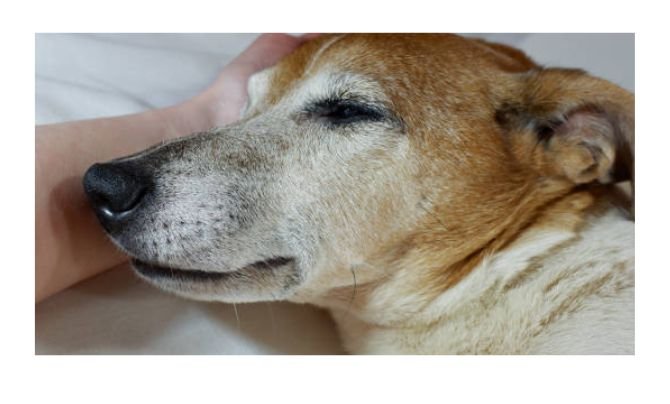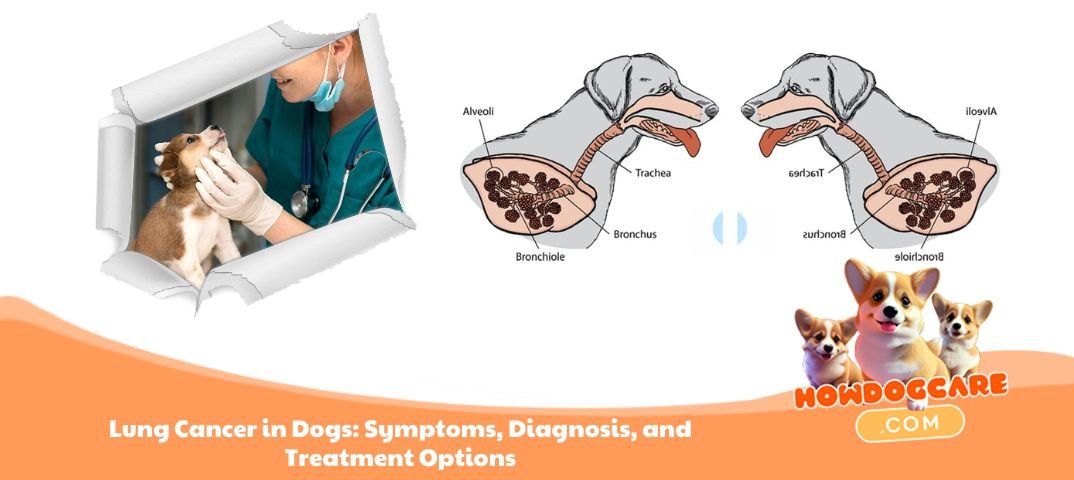Lung cancer in dogs, although relatively rare, is a serious condition that can affect your pet’s overall well-being. Knowing the symptoms, how it’s diagnosed, and the available treatment options can make a huge difference in your dog’s prognosis. In this article, we’ll dive deep into understanding lung cancer in dogs, from the causes and symptoms to treatments and coping strategies.
Understanding Lung Cancer in Dogs
What Is Lung Cancer in Dogs?
Lung cancer in dogs refers to the uncontrolled growth of abnormal cells within the lungs. It can either originate in the lung tissues (primary lung cancer) or spread to the lungs from other areas of the body (secondary or metastatic lung cancer). While primary lung cancer is less common, secondary lung cancer is more frequently seen in older dogs, often as a result of cancer spreading from other organs.
Types of Lung Cancer in Dogs

There are two main types of lung cancer in dogs:
Primary Lung Cancer
Primary lung cancer originates directly within the lung tissues. This form of cancer is usually malignant, meaning it has the potential to grow rapidly and spread to other parts of the body. The most common type of primary lung cancer in dogs is bronchoalveolar carcinoma, which develops from the cells that line the airways of the lungs.
Secondary Lung Cancer (Metastatic)
Secondary lung cancer occurs when cancerous cells from other parts of the body metastasize (spread) to the lungs. This type is more common than primary lung cancer and can originate from cancers like bone cancer (osteosarcoma), mammary gland tumors, or melanoma. In metastatic cases, the prognosis often depends on how widespread the cancer is and how quickly it’s detected.
Read full: PetSafe 2-Pet Meal Splitter with Bowl Review
Causes and Risk Factors of Lung Cancer in Dogs
Environmental Factors
Just like in humans, environmental factors can play a significant role in a dog developing lung cancer. Exposure to secondhand smoke is one of the biggest risks. Dogs that live in homes where people smoke are at a higher risk of developing lung cancer. Pollutants and chemicals in the air, such as those found in urban areas or near factories, can also increase the likelihood of lung-related issues, including cancer.
Genetic Predisposition
Some dog breeds are genetically predisposed to cancer, although no breed has a specific tendency toward lung cancer. However, breeds like Boxers, Beagles, and Bernese Mountain Dogs are more prone to certain types of cancers that could metastasize to the lungs.
Age and Breed Susceptibility
Lung cancer typically affects older dogs, generally those over the age of 10. The risk increases with age, as older dogs are more likely to have a compromised immune system, making it harder for their bodies to fight off abnormal cell growth. While lung cancer can occur in any breed, some research suggests that larger breeds may have a slightly higher risk.
Common Symptoms of Lung Cancer in Dogs
Lung cancer in dogs can be difficult to detect in its early stages, as many of the symptoms are subtle or mimic other respiratory illnesses. However, as the disease progresses, some signs become more apparent.
Respiratory Symptoms
The most obvious symptoms of lung cancer in dogs involve the respiratory system. This includes:
- Persistent coughing (which may or may not produce blood)
- Difficulty breathing (dyspnea)
- Wheezing or abnormal breathing sounds
- Exercise intolerance (your dog may become tired more easily)
These symptoms often prompt a trip to the vet, where further testing is done to identify the underlying issue.
Behavioral and Physical Changes
Aside from respiratory symptoms, you might notice behavioral and physical changes in your dog. This could include:
- Lethargy and decreased energy
- Weight loss
- Loss of appetite
- Reluctance to exercise or play
In some cases, a mass or swelling may be felt in the chest area, especially if the cancer has progressed.
Read more: Top 10 Best Weight Gain Supplements for Dogs Reviews
Less Common but Noteworthy Symptoms
Although less common, some dogs with lung cancer may develop symptoms such as:
- Lameness (due to cancer spreading to the bones)
- Fever
- Unexplained vomiting
If you notice any of these signs in your dog, it’s important to seek veterinary care immediately.
How Lung Cancer Is Diagnosed in Dogs
Accurate diagnosis is critical in determining the best course of treatment for lung cancer in dogs. Your veterinarian will conduct several tests to confirm the presence of cancer and assess its severity.
Veterinary Examination and History
The diagnostic process usually begins with a thorough physical examination and a detailed history of your dog’s symptoms. The vet may ask about your dog’s coughing habits, changes in appetite, and energy levels. From there, they will proceed with more advanced diagnostic methods.
Imaging Techniques (X-rays, CT Scans)
Imaging techniques are essential for visualizing the lungs and detecting tumors. X-rays (chest radiographs) are commonly used to identify masses or lesions in the lungs. If an X-ray reveals something suspicious, the vet may recommend more detailed imaging, such as a CT scan, to get a clearer view of the tumor’s size, location, and whether it has spread.
Biopsy and Cytology
If imaging confirms the presence of a mass, a biopsy may be performed to determine if the tumor is cancerous. A biopsy involves taking a small tissue sample from the tumor, which is then analyzed under a microscope. In some cases, a fine needle aspiration (cytology) may be used, which involves using a needle to collect cells from the tumor for examination.
Treatment Options for Lung Cancer in Dogs
Treating lung cancer depends on various factors, such as the type of cancer, its stage, and the overall health of the dog. The primary treatment options include surgery, chemotherapy, and radiation therapy, along with supportive care to manage symptoms.
Surgery for Lung Cancer
Surgical removal of the tumor is often the first-line treatment, especially if the cancer is localized and hasn’t spread. This procedure, known as a lung lobectomy, involves removing the affected portion of the lung. Surgery offers the best chance for a cure in cases of primary lung cancer, but it may not be an option if the cancer is too advanced or has metastasized to other organs.
Chemotherapy
Chemotherapy may be used in cases where surgery isn’t possible or as an additional treatment to help slow the spread of cancer cells. While chemotherapy can be effective in reducing tumor size and prolonging life, it doesn’t cure cancer. It’s often used to manage symptoms and improve quality of life for dogs with metastatic lung cancer.
Radiation Therapy
Radiation therapy is another treatment option, particularly when surgery isn’t viable or for dogs with tumors that cannot be easily removed. This treatment uses high-energy radiation to target and kill cancer cells. It can help shrink tumors and relieve symptoms but may come with side effects, such as skin irritation and fatigue.
Palliative Care and Pain Management
For dogs in the later stages of lung cancer or those not suitable for aggressive treatment, palliative care focuses on keeping them comfortable. This may involve pain management, medications to reduce coughing, and supportive therapies to improve breathing. The goal is to enhance the dog’s quality of life for as long as possible.
Read Reviews:
Prognosis of Lung Cancer in Dogs
Factors That Affect Prognosis
The prognosis for dogs with lung cancer varies based on several factors, including the size and type of the tumor, whether it has spread, and how early it was detected. Dogs with primary lung cancer that is caught early and treated surgically often have a better prognosis, with survival times ranging from several months to a few years.
Survival Rates and Expectations
Survival rates for lung cancer depend heavily on the stage of the disease at diagnosis. If the cancer is detected early and surgery is successful, some dogs can live for 1-2 years or more. However, for dogs with advanced or metastatic lung cancer, survival times may be much shorter, often just a few months.
Preventing Lung Cancer
While not all cases of lung cancer can be prevented, there are steps you can take to reduce the risk.
Reducing Environmental Risks
One of the most important preventative measures is minimizing your dog’s exposure to harmful environmental factors, such as secondhand smoke and air pollutants. Keeping your home smoke-free and avoiding areas with heavy pollution can significantly reduce the risk of lung cancer in your dog.
Regular Veterinary Checkups
Regular checkups with your veterinarian can help catch potential health issues early, including lung cancer. Annual exams, especially for older dogs, allow your vet to monitor your pet’s overall health and detect any abnormalities before they become serious.
Coping with a Lung Cancer Diagnosis in Your Dog

Receiving a lung cancer diagnosis for your dog can be devastating. However, there are ways to manage the situation and ensure your dog remains comfortable.
Supporting Your Pet’s Quality of Life
Focusing on your dog’s comfort is key. This could mean making changes to their environment, like reducing strenuous activities or providing a more comfortable place to rest. Medications prescribed by your vet can help manage pain and symptoms, making your dog’s final months or years more pleasant.
Emotional Support for Pet Owners
Coping with a pet’s cancer diagnosis can be emotionally challenging. Consider seeking support from friends, family, or even a support group for pet owners going through similar experiences. It’s important to take care of yourself while navigating this difficult time.
Visit article: Top 10 Best Supplements for Dogs with Cancer Reviews
Conclusion
Lung cancer in dogs is a serious and often life-threatening condition, but early detection and treatment can improve outcomes. By understanding the symptoms, causes, and treatment options available, you can help ensure your dog gets the best possible care. Regular veterinary checkups and minimizing exposure to environmental risks can also play a role in preventing lung cancer.
FAQs
Can dogs survive lung cancer?
Yes, dogs can survive lung cancer if it’s detected early and treated appropriately. The best chances of survival are with surgery for localized tumors, though survival rates depend on the type and stage of cancer.
How fast does lung cancer progress in dogs?
The progression of lung cancer varies. Some cancers grow slowly, while others can spread rapidly. Early detection and treatment can slow the disease’s progression.
Are certain dog breeds more prone to lung cancer?
While no specific breed is known to be more prone to primary lung cancer, larger dog breeds, such as Boxers and Bernese Mountain Dogs, are often more susceptible to cancers that could metastasize to the lungs.
Is lung cancer in dogs painful?
Lung cancer can cause discomfort, especially if it has spread to other areas. Symptoms like difficulty breathing and coughing can be distressing, but palliative care and pain management can help alleviate these symptoms.
How can I help my dog with lung cancer feel more comfortable?
You can make your dog more comfortable by following your vet’s recommendations for pain management and palliative care, providing a restful environment, and ensuring they are comfortable in their daily activities.






